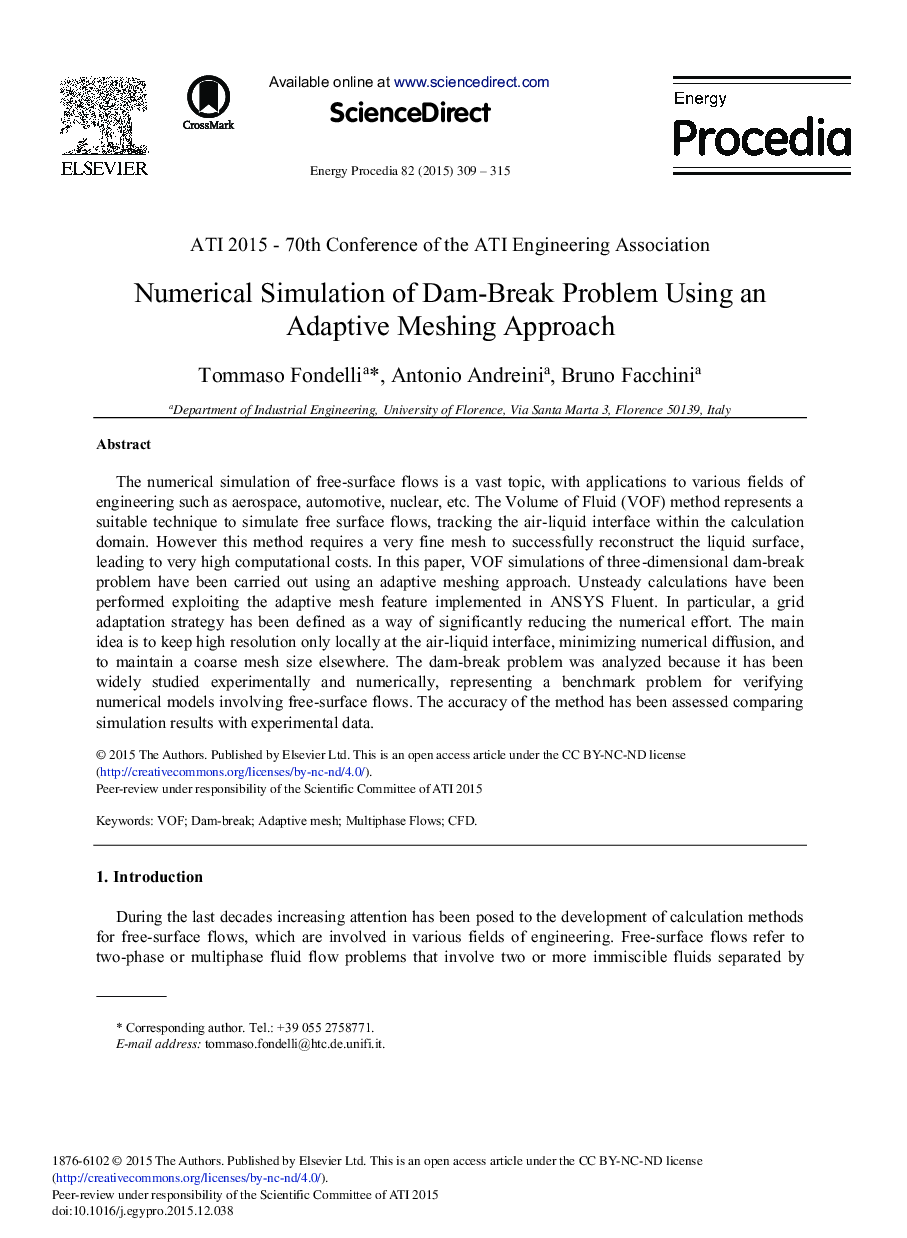| Article ID | Journal | Published Year | Pages | File Type |
|---|---|---|---|---|
| 1509073 | Energy Procedia | 2015 | 7 Pages |
The numerical simulation of free-surface flows is a vast topic, with applications to various fields of engineering such as aerospace, automotive, nuclear, etc. The Volume of Fluid (VOF) method represents a suitable technique to simulate free surface flows, tracking the air-liquid interface within the calculation domain. However this method requires a very fine mesh to successfully reconstruct the liquid surface, leading to very high computational costs. In this paper, VOF simulations of three-dimensional dam-break problem have been carried out using an adaptive meshing approach. Unsteady calculations have been performed exploiting the adaptive mesh feature implemented in ANSYS Fluent. In particular, a grid adaptation strategy has been defined as a way of significantly reducing the numerical effort. The main idea is to keep high resolution only locally at the air-liquid interface, minimizing numerical diffusion, and to maintain a coarse mesh size elsewhere. The dam-break problem was analyzed because it has been widely studied experimentally and numerically, representing a benchmark problem for verifying numerical models involving free-surface flows. The accuracy of the method has been assessed comparing simulation results with experimental data.
